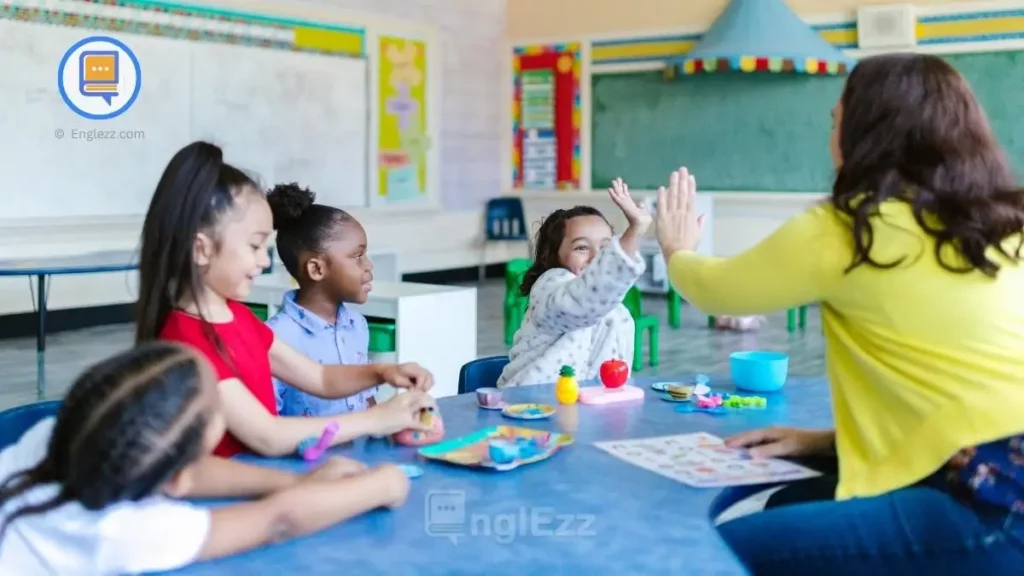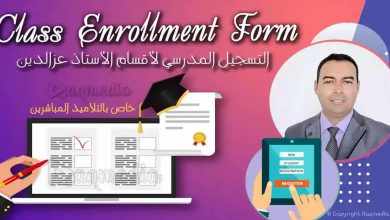In the diverse tapestry of today’s classrooms, where young learners from various cultural backgrounds come together to embark on a journey of language acquisition, the nuances of pronunciation instruction resonate profoundly. Understanding that language is not merely a set of phonetic sounds but a gateway to cultural identity and communication, educators are increasingly recognizing the pivotal role of cultural awareness in shaping the pronunciation skills of multicultural students.
Diving beyond conventional pedagogical approaches, this article invites you to explore the intricate interplay between culture and pronunciation teaching, offering insights into how embracing diverse cultural elements can foster inclusivity and bolster linguistic confidence among young learners navigating multiple linguistic landscapes.
Table of Contents
- Exploring Cultural Considerations in Teaching Pronunciation to Young Learners
- Understanding Cultural Considerations in Pronunciation Teaching
- Strategies for Cultural Considerations in Teaching Pronunciation
- Enhancing Inclusivity Through Linguistic Diversity
- Building Linguistic Confidence in Multicultural Young Learners
- Empowering Educators with Cultural Competence
- Bridging Cultures Through Pronunciation Mastery
- Final Tips
- Advancing Cultural Competence in Pronunciation Instruction
- FAQs
- 1. How can I incorporate cultural elements into pronunciation lessons effectively?
- 2. Why is it important to consider cultural background when teaching pronunciation?
- 3. What role does empathy play in addressing pronunciation challenges in a multicultural classroom?
- 4. How can educators foster linguistic confidence among multicultural young learners?
- 5. What resources are available to support educators in enhancing their cultural competence within language instruction?
Exploring Cultural Considerations in Teaching Pronunciation to Young Learners
Amidst the melodic symphony of accents and intonations echoing through language classrooms, lies a wealth of untapped potential waiting to be unearthed. By infusing cultural elements into pronunciation lessons, educators can transcend traditional paradigms and create an environment where every student’s unique linguistic heritage is not only acknowledged but also celebrated. Discover the impact of Cultural Considerations in Teaching Pronunciation to Young Learners. Enhance your teaching approach today!

This deliberate incorporation of cultural nuances goes beyond mere linguistics; it promotes a sense of belonging and validation for students whose voices carry echoes of distant homelands. As we embark on this exploration of blending culture with pronunciation pedagogy, we unravel the secrets to empowering multicultural young learners with the tools they need to navigate linguistic diversity with pride and proficiency.
Understanding Cultural Considerations in Pronunciation Teaching
In the realm of language learning, cultural background plays a pivotal role in shaping how young learners approach pronunciation acquisition. Various factors such as dialectal variations, intonation patterns specific to one’s native language, and even speech rhythm influenced by cultural norms all contribute to the unique phonetic challenges students may encounter. For example, the pronunciation of certain sounds like /r/ or /th/ can be particularly challenging for learners whose first languages lack these phonemes. Understanding these nuances allows educators to tailor their instruction to address these specific obstacles effectively.
Integrating culture into pronunciation lessons serves not only to enrich students’ linguistic skills but also to foster a deeper connection with the language being learned. By incorporating culturally relevant examples, songs, or stories into pronunciation tasks, educators create a more engaging and relatable learning experience for young learners. For instance, using traditional folk tales or popular songs from students’ diverse backgrounds can not only enhance their comprehension of sounds but also instill pride in their heritage languages within the classroom context.
Cultural sensitivity is paramount in ensuring student motivation and receptiveness when correcting pronunciation errors. By acknowledging and valuing the linguistic diversity present among learners, educators cultivate an inclusive learning environment that encourages risk-taking and growth. When students feel respected for their unique accents or speech patterns while receiving constructive feedback on their pronunciation, they are more likely to embrace the learning process with enthusiasm and openness. Ultimately, promoting cultural sensitivity in pronunciation teaching paves the way for enhanced communication skills and increased confidence among multicultural young learners.
Strategies for Cultural Considerations in Teaching Pronunciation
Strategies for incorporating cultural elements into pronunciation lessons play a vital role in creating an inclusive and engaging educational environment for young learners of diverse backgrounds. One effective approach is to integrate culturally relevant examples or content when teaching pronunciation. For instance, educators can use songs, stories, or tongue twisters from students’ native languages to demonstrate various sounds and intonations. By connecting pronunciation exercises to familiar cultural references, students feel a sense of belonging and are more motivated to engage with the learning process.
Creating a supportive classroom environment that celebrates linguistic diversity is another key strategy in teaching pronunciation to multicultural young learners. Teachers can organize activities where students share phrases or words unique to their cultural heritage, encouraging them to appreciate each other’s languages and accents. This fosters mutual respect and builds confidence among students in embracing their linguistic identities. Moreover, implementing group discussions or projects that allow for peer feedback on pronunciation helps create a collaborative space where differences are valued and learning becomes a collective endeavor.
In addressing pronunciation challenges within a multicultural context, empathy and open-mindedness are essential qualities for educators. Understanding that each student brings a unique set of linguistic experiences and struggles can guide teachers in providing tailored support and feedback. Encouraging students to express their difficulties openly without fear of judgment promotes a safe learning environment where mistakes are viewed as opportunities for growth rather than failures. By fostering a culture of acceptance and understanding, educators can empower their students to overcome pronunciation barriers with confidence and resilience across varied cultural backgrounds.
Enhancing Inclusivity Through Linguistic Diversity
Embracing linguistic diversity in pronunciation teaching not only enriches the learning experience for multicultural young learners but also plays a vital role in fostering a sense of belonging within the classroom. By acknowledging and celebrating the varied ways in which different cultures express sounds and words, educators create an inclusive environment where students feel valued and understood. For instance, encouraging students to share unique pronunciation patterns from their native languages can foster a collaborative atmosphere that highlights the beauty of diversity in linguistic expression.
Exposing students to various accents and speech patterns serves as a valuable educational tool that goes beyond language proficiency. When learners are exposed to different pronunciations and intonations, they develop tolerance and appreciation for the rich tapestry of linguistic expressions present in multicultural settings. By incorporating activities that involve listening to diverse voices and engaging with global accents, educators help young learners broaden their perspectives and cultivate respect for linguistic variations worldwide.
Educators are encouraged not only to recognize and validate diverse pronunciations within their classrooms but also to guide students towards clearer communication skills that facilitate effective interaction across languages. By creating opportunities for students to practice active listening and mimicry of different accents without judgment, teachers can instill confidence in learners while promoting a growth mindset towards improving pronunciation skills. This approach not only enhances linguistic proficiency but also nurtures a supportive learning environment where all linguistic backgrounds are respected and celebrated.
Building Linguistic Confidence in Multicultural Young Learners
Boosting the linguistic confidence of multicultural young learners requires a multifaceted approach that acknowledges and celebrates their diverse backgrounds. To achieve this, educators can implement strategies that focus on nurturing self-esteem within a multicultural setting. Encouraging students to embrace their cultural identity through language fluency not only fosters a sense of belonging but also empowers them to express themselves authentically. By highlighting the unique linguistic traits that each student brings to the classroom, teachers can create an environment where diversity is seen as a strength rather than a barrier.
Furthermore, illustrating the connection between cultural identity and language fluency emphasizes to students that their heritage and background play vital roles in shaping their pronunciation skills. By acknowledging the significance of each student’s cultural context, educators can instill pride in students’ linguistic heritage while simultaneously guiding them toward clearer communication. This approach helps young learners understand that their accent or pronunciation is not a flaw but rather an integral part of who they are, contributing to their overall confidence when engaging in language activities.
In addition, nurturing a growth mindset among multicultural young learners is essential for building resilience and facilitating continuous improvement in pronunciation skills across diverse cultures. By encouraging students to view challenges as opportunities for growth rather than signs of failure, educators can promote a positive attitude towards learning pronunciation. Emphasizing the importance of perseverance and practice while validating students’ progress along the way contributes to developing learners who are confident in their ability to navigate various linguistic contexts effectively. Through these strategies, educators play a crucial role in fostering self-assurance and a willingness to engage with language learning positively within a multicultural educational setting.
Empowering Educators with Cultural Competence
Professional development plays a pivotal role in preparing educators to navigate the complexities of teaching pronunciation in multicultural settings. In today’s diverse classroom environments, it is essential for teachers to embrace cultural competence as a core aspect of their instructional practices. Training programs that focus on enhancing educators’ awareness of various cultural backgrounds and communication styles equip them with the tools needed to foster inclusive learning spaces. For instance, workshops that delve into the intersection of language and culture can help teachers recognize how students’ heritage influences their speech patterns and pronunciation preferences.
Advocating for ongoing teacher training initiatives underscores the commitment to promoting diversity, equity, and inclusion within educational settings. By continuously engaging in professional development opportunities centered on cultural sensitivity, educators can refine their pedagogical approaches to better meet the needs of a multicultural student body. Through targeted training sessions, teachers can learn effective strategies for incorporating cultural elements into pronunciation lessons authentically, thereby enhancing students’ linguistic self-confidence and esteem.
To support educators in expanding their cultural competence within language instruction, institutions can provide resources such as culturally relevant teaching materials, access to online forums or communities dedicated to intercultural communication, or collaborative partnerships with linguists specializing in diverse dialects. Encouraging participation in conferences or seminars focusing on multicultural education further enriches teachers’ perspectives and empowers them to embed cultural considerations seamlessly into their curriculum design. By embracing these resources and opportunities for growth, educators can cultivate an environment where students feel valued and understood amidst their unique language backgrounds while honing their pronunciation skills effectively.
Bridging Cultures Through Pronunciation Mastery
In the realm of language instruction, pronunciation plays a pivotal role not only in communication but also in fostering cultural understanding and appreciation. As educators delve into the nuances of teaching pronunciation to multicultural young learners, they embark on a journey that transcends linguistic mastery to embrace cultural diversity. By recognizing the interconnectedness of language and culture, educators can bridge divides and cultivate an inclusive learning environment where every student’s linguistic heritage is celebrated.

Through pronunciation mastery that incorporates cultural elements, students are not merely refining their speech sounds; they are also unraveling the rich tapestry of global diversity. Imagine a classroom where a Vietnamese student confidently demonstrates the tones of their native language while a French learner shares the rhythm and melody of French intonation. As these diverse voices blend harmoniously through accurate pronunciation practices, students forge connections beyond language barriers, creating bridges between cultures through the power of spoken words.
Bridging cultures through pronunciation mastery affirms each student’s unique identity while nurturing empathy and curiosity toward others’ linguistic experiences. It is in this collaborative exploration of sounds and meanings that young learners develop not just as speakers but as global citizens who value pluralism and mutual understanding.
By weaving cultural considerations into pronunciation teaching, educators pave the way for students to navigate a multilingual world with confidence, respect, and an enduring curiosity to learn from one another. In embracing cultural diversity through pronunciation mastery, educators seed the roots for future generations to bloom as interconnected individuals enriched by the mosaic of global languages.
Final Tips
When considering cultural considerations in teaching pronunciation to young learners from diverse backgrounds, it is crucial to remember that language is deeply intertwined with personal identity and heritage. To enhance students’ linguistic confidence and inclusivity in the classroom, educators can implement the following tips:
- Encourage Peer Feedback: Foster a supportive environment where students feel comfortable providing constructive feedback on each other’s pronunciation. Peer assessment not only promotes collaboration but also offers learners different perspectives on pronunciation variations that may be influenced by diverse cultural backgrounds. For example, organizing peer review sessions where students can offer gentle corrections and encouragement can help build a sense of community while improving pronunciation skills.
- Utilize Authentic Cultural Materials: Incorporate authentic materials like songs, poems, or stories from various cultures into pronunciation lessons. By exposing students to diverse linguistic contexts, they can appreciate the richness of different accents and dialects while honing their listening skills. For instance, playing traditional songs from different countries can help students grasp unique sound patterns and intonations, leading to a more nuanced understanding of pronunciation beyond standard textbook exercises.
- Celebrate Pronunciation Progress: Acknowledge and celebrate the improvement of each student’s pronunciation skills regardless of their native language or accent. Recognizing progress, no matter how small, fosters a positive learning atmosphere and motivates learners to continue refining their pronunciation abilities. For instance, hosting periodic pronunciation showcases where students demonstrate their advancements in front of peers can boost confidence and instill a sense of achievement based on individual growth rather than strict adherence to uniform pronunciation norms.
By implementing these tips with sensitivity and cultural awareness, educators can create an inclusive learning environment where multicultural young learners feel valued for their linguistic diversity while enhancing their overall pronunciation proficiency.
Advancing Cultural Competence in Pronunciation Instruction
In conclusion, the journey towards mastering pronunciation in a multicultural classroom extends far beyond phonetic exercises and tongue twisters. By delving into the realms of cultural awareness and sensitivity, educators can unlock a world of linguistic diversity that enriches the learning experience for young learners from various backgrounds. Understanding how cultural nuances shape language acquisition and recognizing the significance of incorporating these elements into pronunciation lessons are vital steps towards fostering inclusivity, building linguistic confidence, and establishing meaningful connections across cultures.

As educators venture into the realm of teaching pronunciation to multicultural young learners, embracing diversity becomes not just a goal but an ethos essential for promoting authentic communication skills. Through a blend of empathy, open-mindedness, and strategic cultural integration, teachers can sculpt an educational landscape where students feel valued, respected, and empowered to navigate the intricate tapestry of languages with newfound mastery.
The transformative power of bridging cultures through pronunciation mastery lies not only in honing vocal sounds but also in nurturing understanding, tolerance, and appreciation for the myriad ways language shapes our identities and connects us as global citizens.
FAQs
1. How can I incorporate cultural elements into pronunciation lessons effectively?
Integrate culturally relevant examples or stories that resonate with your students’ heritage to make pronunciation practice more engaging and relatable.
2. Why is it important to consider cultural background when teaching pronunciation?
Cultural background influences speech patterns and phonetic perception, impacting how language sounds are produced and perceived by learners.
3. What role does empathy play in addressing pronunciation challenges in a multicultural classroom?
Empathy fosters understanding and respect for diverse pronunciations while encouraging students to communicate effectively despite variations in accents or speech patterns.
4. How can educators foster linguistic confidence among multicultural young learners?
By celebrating students’ unique linguistic traits, empowering them to embrace their cultural identity through language fluency, and promoting a growth mindset that values continuous improvement.
5. What resources are available to support educators in enhancing their cultural competence within language instruction?
Professional development programs focused on diversity, equity, inclusion practices; workshops on multicultural education; collaboration opportunities with experts in cross-cultural communication provide valuable support for educators seeking to enhance their cultural competence.









